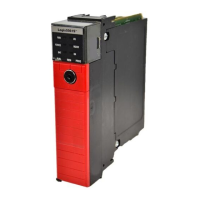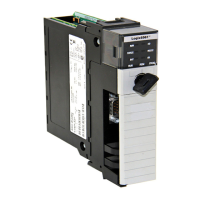Do you have a question about the Allen-Bradley 1756-L72 and is the answer not in the manual?
Step-by-step instructions for installing the 1756-L7x controller.
Step-by-step instructions for installing the 1756-L6x controller.
Details how to establish a connection to the controller for initial use.
Describes the various connection methods available for the 1756-L7x controller.
Describes the various connection methods available for the 1756-L6x controller.
Instructions for connecting a workstation to the 1756-L7x controller via USB.
Steps to configure the RS232 DF1 device driver in RSLinx for serial communication.
Guidance on updating the controller's firmware using available tools.
Methods for establishing an online connection with the controller.
Process of transferring a project from RSLogix 5000 software to the controller.
Process of copying a project from the controller to RSLogix 5000 software.
Reference table for understanding controller operation modes and their meanings.
Instructions for loading or storing controller projects to/from the memory card.
Details the EtherNet/IP network's capabilities and benefits for control systems.
Explains the ControlNet network's real-time capabilities for I/O and messaging.
Describes DeviceNet network's use of CIP for industrial device connectivity.
Steps to configure the 1756-L6x controller for serial communication in RSLogix 5000.
How ControlLogix controllers produce and consume system-shared tags.
Steps to add an I/O module to the backplane in RSLogix 5000.
Steps to add remote I/O modules to the I/O Configuration folder.
Steps to add distributed I/O modules to the I/O Configuration.
Methods for reconfiguring I/O modules via properties or message instruction.
Details motion control instructions for axes and programming languages used.
Using multiple tasks to schedule and prioritize program execution based on criteria.
Programs group data and logic, containing routines and tags for executable code.
Designing and configuring sets of commonly used instructions for project consistency.
Using GSV and SSV instructions to get and set controller data.
Handling communication timeouts and warnings for I/O devices.
Explains how redundancy provides system availability by switching to a secondary chassis.
Procedure for building a typical redundant system.
Details catalog numbers type-approved and certified for SIL2 applications.
Identifies RSLogix 5000 software as the required PADT for SIL2 applications.
Lists SIL2 system configurations: fail-safe, high-availability, fault-tolerant.
Describes a fail-safe configuration where hardware in the safety loop is not redundant.
Explains using redundant controller chassis to increase system availability.
Details the fault-tolerant configuration using fully-redundant controllers and modules.
Explains messages indicated on the status display when the controller is faulted.
Lists specific fault types, codes, and messages for major recoverable faults.
Explains I/O fault messages and how to diagnose fault types.
Requires precise matching of all keying attributes for communication.
| Brand | Allen-Bradley |
|---|---|
| Model | 1756-L72 |
| Category | Controller |
| Language | English |











